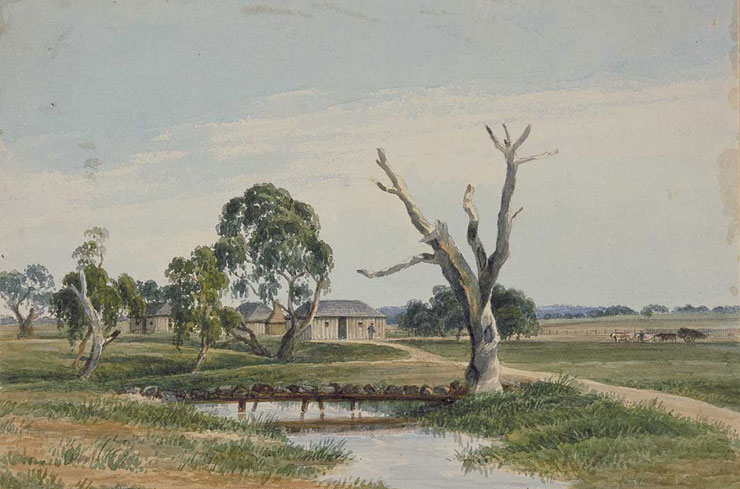Scootle has stopped supporting resources that use the Adobe Flash plug-in from 18 Dec 2020. Learning paths that include these resources will have alerts to notify teachers and students that one or more of the resources will be unavailable. Click here for more info.
 'Men's huts, Challicum, 1848'
'Men's huts, Challicum, 1848'
TLF ID R3305
This is a watercolour by Duncan Cooper that depicts the huts provided for male farm labourers at Challicum, a sheep run west of Ballarat in western Victoria. In the foreground is a creek spanned by a narrow and rudimentary bridge weighted with rocks. The watercolour, which measures 13.4 cm x 19.4 cm, is the nineteenth watercolour included in a field album that Cooper called 'The Challicum Sketchbook'.
